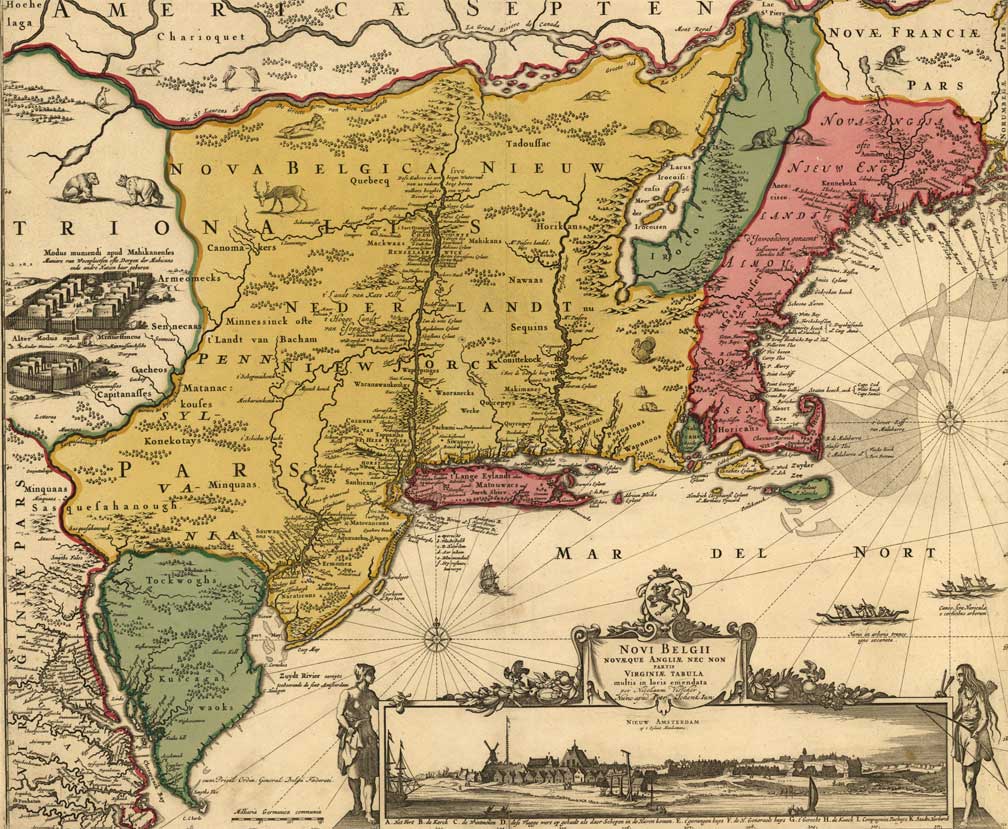
In September, a Dutch group, led by Peter Minuit purchased the 22 square mile Island of Manhattan from the Canarsie Indians. The asking price was 60 guilders and some trinkets, the equivalent of 24 dollars.
The Dutch followed the English model of using private investors to help pay for the establishment of a colony. In 1621, the Dutch formed the Dutch-West Indies Company. The first Dutch sent by the company settled the upper Hudson River, founding a fur trading post called "Fort- Orange", near the present day Albany. They also established trading posts up and down the Hudson River, one at its mouth.
In 1626 the Dutch Indies Company sent Peter Minuit to be the governor of the new colony. His instructions were not to use violence on the Native Americans. Minuit offered the Natives who lived on Manhattan Island a variety of goods in exchange for the island of Manhattan. The values of the pots, beads and blankets were $24. The Natives did not believe that land could be owned, so they agreed to the exchange. In addition to buying the island, the Dutch trader entered into an agreement with the Iroquois confederacy.
The fur trade rapidly expanded and the Dutch settlement founded on Manhattan Island rapidly grew to more the1, 000 people. In 1647, Peter Stuyvesant was sent by the Dutch Indies Company to be the new governor. On his arrival he announced that the name of the settlement would henceforth be New Amsterdam.
Stuyvesant governed the colony for 17 years. During his tenure the city grew rapidly. By 1660 New Amsterdam was home to 8,000 people. New Amsterdam became the home of the first Jewish community in the United States.
.